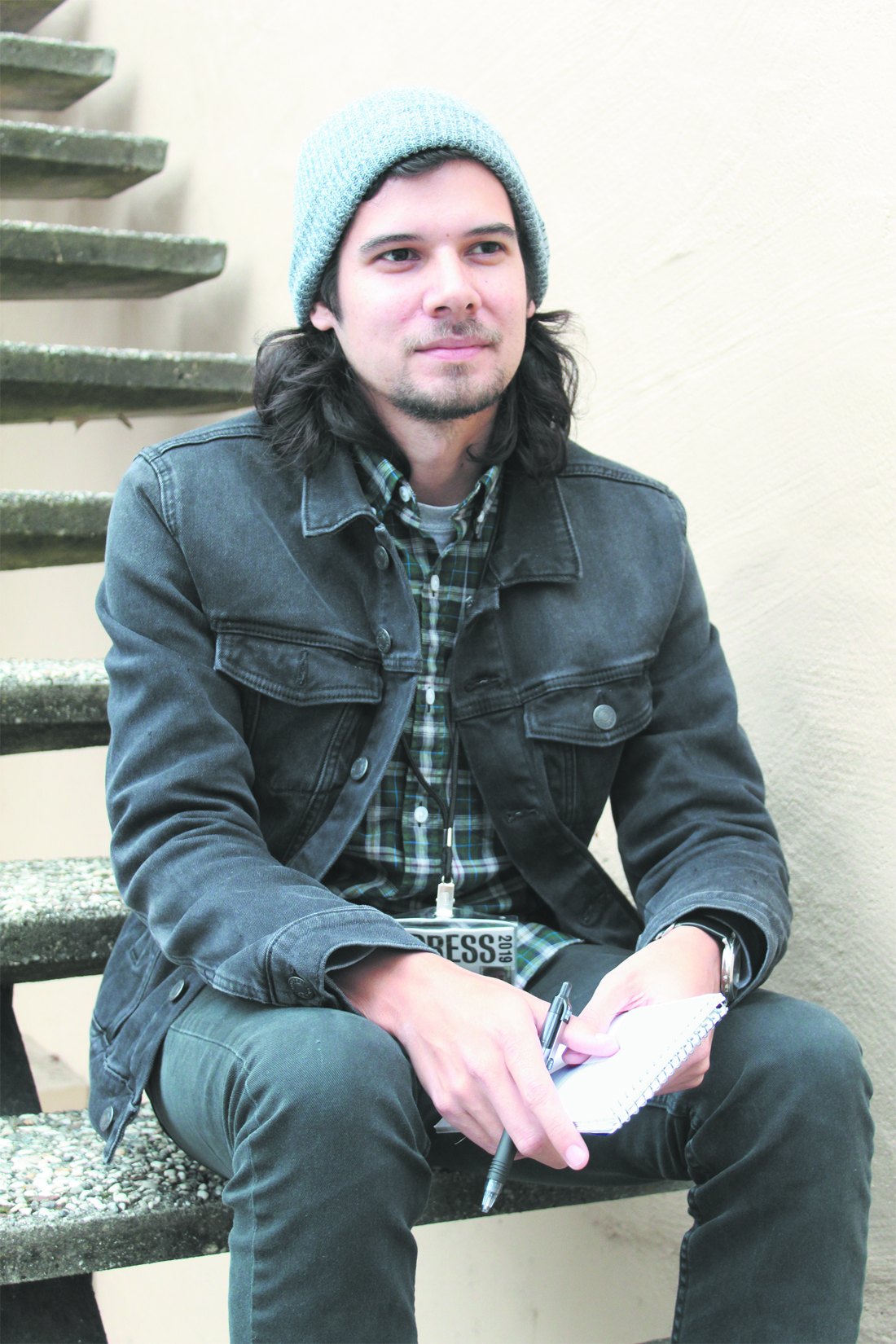
Photo by Ashiah Scharaga
Staff writer Andre Byik has hopped from disaster to disaster, wondering what comes next.
I woke up on Nov. 8, 2018, knowing I had a big story to cover.
Steven Crittenden, the former Chico State football player and death row inmate who was granted a new trial in the high-profile 1987 murder of a Chico couple, had been brought to Butte County from San Quentin State Prison for a pivotal change-of-venue hearing. Exciting stuff for this reporter on the courts beat, then at the Chico Enterprise-Record.
As I drove along the highway from Chico to the courthouse in Oroville, a large column of smoke loomed in the distance. I snapped a photo of the plume with my phone through my driver’s-side window. I’ll follow up on that later, I thought.
Inside the courtroom, where proceedings were underway, bailiffs and attorneys began getting pinged on their phones. The judge called for a brief break to gather more information. District Attorney Mike Ramsey turned toward the gallery and mouthed to me, “It’s bad.”
The Camp Fire was well on its way to upending life in Butte County. The destruction became clear a day later, when I stood at the empty corner of Skyway and Pearson Road in Paradise. The sky was orange. The smoke was choking. Buildings lay smoldering and cars were burned to their frames. What now? I began taking pictures.
I had stood in a ghost town not long before. During the height of the Oroville Dam spillway crisis in 2017, I sped past oncoming evacuation traffic escaping toward Chico, making it to downtown Oroville in time to be swept away in a flood if the emergency spillway were to collapse as feared. I flagged down the lone vehicle driving the streets—a police patrol unit—and asked the officer, “Did the dam break yet?”
“Not yet,” he said.
The absurdity of the situation wasn’t lost on either of us.
In the days that followed, national and regional reporters descended on the scene. Butte County Sheriff Kory Honea led daily press conferences. There was a rush in the newsroom to find out how evacuees—more than 180,000 of them—were faring and what had caused the failures at the dam structure. Turns out, it was a dress rehearsal.
Cut to November 2018, and Honea again took to the lectern, this time holding daily press conferences in a smoky hall at the Silver Dollar Fairgrounds in Chico. Day after day he’d deliver grim news that was carried live on TV. The death toll rose. More victims were identified. Hundreds remained missing.
The throng of national and regional reporters stayed longer this time, and nerves frayed. In those early days, the sheriff became confrontational with reporters, answering some questions by asking if they had heard what he’d said just a few minutes earlier. Or telling them to draw their own conclusions about the facts presented, such as why most of the dead appeared to be elderly. Local and state officials in the back of the room appeared to take some delight in his handling of the press, smirking at Honea’s combative responses.
The sheriff later told me that he felt compelled to become more direct at the time. Survivors were watching on social media and television, and they appreciated his willingness to “tell it like it is” without speculation.
I didn’t realize then that the Camp Fire would consume my work life for the next year. My to-do list often leads me to heart-wrenching stories that have become so common in this post-fire landscape.
One that has left an indelible mark on me came a few months after I was hired at the CN&R. I reported a tough piece about fire victims whose remains had yet to be officially identified nine months after they were discovered. Families of the deceased spoke about living in limbo—in the realm of uncertainty between knowing their loved ones were gone and not having confirmation.
Under less tragic circumstances, I can relate to the sentiment. Reporting on the fire and its aftermath has felt like living in a suspended state of transition.
Is there anything beyond the disaster?
